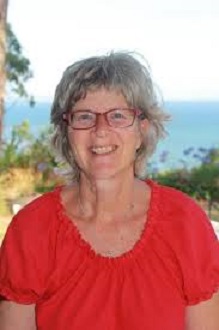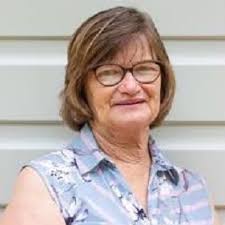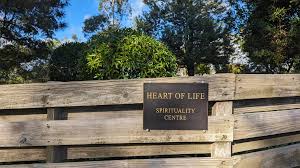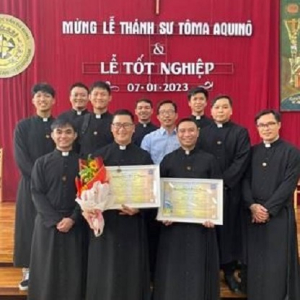Peter MALONE
MSC Pacific Islands Province – Silver Jubilee, Vito. Skills Training, Wanadoi
MSC Pacific Islands Province – Silver Jubilee, Vito. Skills Training, Wanadoi
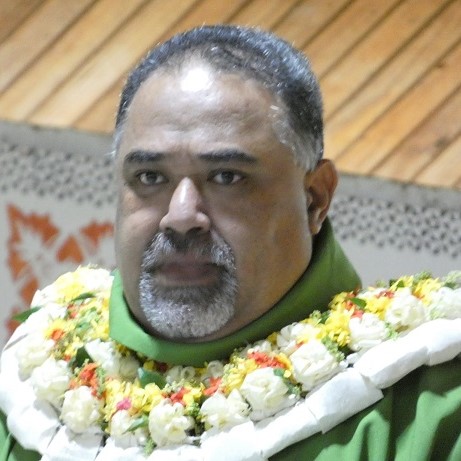
Vito Kelekele, MSC Provincial Superior, Silver Jubilee
Today, we joyfully commemorate the Silver Jubilee of Profession as Missionaries of the Sacred Heart for Fr. Vito Kelekele, the Provincial Superior of our Congregation. The celebration takes place at the Holy Spirit Parish in Veivatuloa.

As we gather to honor this significant milestone, we extend our heartfelt prayers for Fr. Vito’s continued leadership and well-being. May he be blessed with many more years of health, prosperity, and dedicated service to our community.
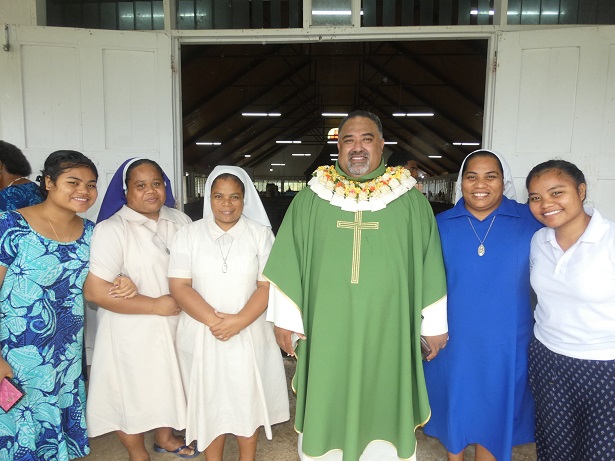
Wanadoi skills development ministry
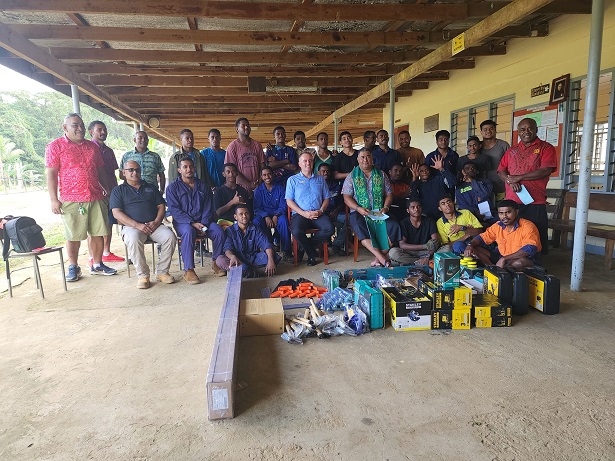
We are forever grateful to APTC Country Manager and their Operation Team whom are in partnership with our Institution.
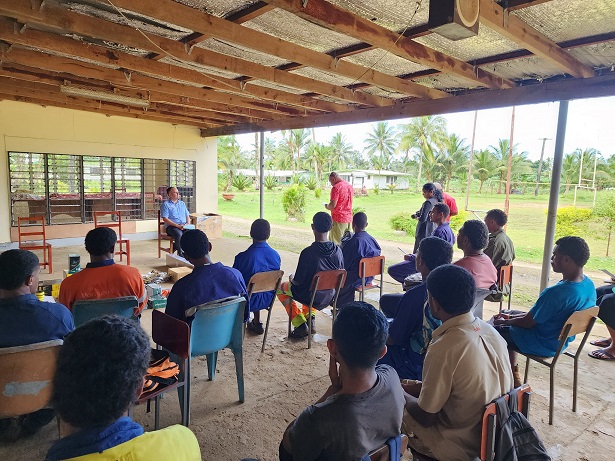
They have refurbished our Carpentry Workshop. Today we witnessed the handing over ceremony and they also equipped the newly refurbished workshop with basic relevant tools.
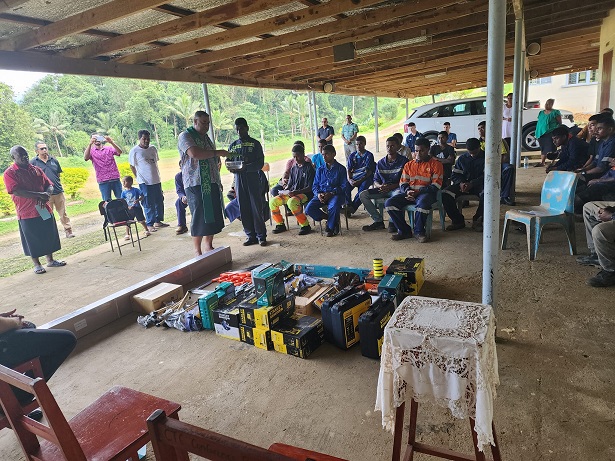
These opportunities have immensely contributed to our needs to education and skills development especially in the TVET section.
Looking forward to Episcopal Ordination, Simon Mani, July 27th. MSC Kiribati
Looking forward to Episcopal Ordination, Simon Mani, July 27th. MSC Kiribati
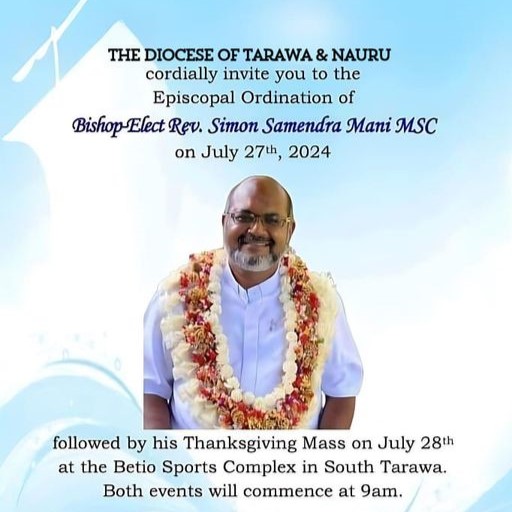
MSC missionaries arrived in Kiribati only a few years after the arrival of MSC in Sydney. There have been strong links between Kiribati and Australia.
ARRIVAL OF THE ROMAN CATHOLIC CHURCH
Among the people recruited in the 1870s as workers to Tahiti were Betero and Tiroi from the island of Nonouti. During their stay in Tahiti, they became members of the Roman Catholic Church. Their belief was so strong that when they returned to Nonouti in about 1880, they started to convert the people of their island. A number of people were converted and baptized by Betero and they decided to build churches in their villages; they built eight small churches altogether. When the churches were completed, Betero and Tiroi sent a request to Samoa for missionaries to be sent to Nonouti.
In response to the request, three missionaries from the Sacred Heart Mission, which had its headquarters in France were sent in 1887 and arrived at Nonouti in 1888. They were Father Joseph Leray, Father Edward Bontemps and Brother Conrad Weber. Father Leray was later appointed as the first Bishop in the Gilberts.

Bishop Joseph Leray
After the first Catholic Mission had been established on Nonouti the priests visited other islands trying to spread their faith. Other priests and later some nuns arrived to help them. Because of the strength of the London Missionary Society in the Southern Gilberts, the Catholic Church could not make much progress there, but in the Northern and Central Gilberts, where the American Mission were reducing its efforts, the Catholic Church won many followers.
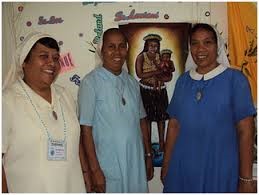
OLSH Sisters, Kiribati
In 1898, Father Leray removed a young teacher from his pupils at the Little Order of Issouidon and brought him back to the Gilberts. This was Father Alexandre Cochet, a young man with firm ideas and clear-cut plans. Father Cochet was first landed in the Ellice Islands (Tuvalu) with a colleague. They were there for fifteen months living in a rough shelter, and they succeeded in carrying one baptism in secret. Then they were recalled to Tarawa. Father Cochet had his plans of which he reminded the Bishop "Monsignor, I came to the Gilberts to write books. Please consider this, for I have no other reason for existing or being here".

For these future books, he already had a printing press, but he needed printers. Father Cochet and Brother Etienne gathered several students together and went off to Abaiang. In a virtual desert on the southern part of the island, at Teaoraereke, they found the site. When they had cleared the land and installed several wooden boxes, Father Cochet, sitting between two open doors could see both ocean and lagoon and spit in each one on either side so he said.
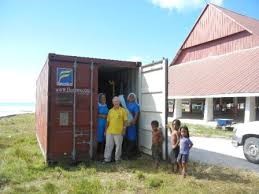
Long-serving Australian MSC on Kiribati, Albert Yelds
At Teaoraereke, Father Cochet composed and translated books. He wrote 2500 pages in less than 15 years - nearly 30 books and brochures whose printing he supervised as well as his printing press and the school he had charge of a parish comprising about a third of Abaiang. The school was supported by the sale of books and a small grant. It was also necessary for the pupil to find some of their food. There were really more than twenty of them.
Abaiang has the distinction of being one of the cradles of Christianity and schools both Protestants and Catholics in the Gilberts Group. It is also the place where the Bible was translated into Gilbertese in addition to the vast amount of publishing and translating undertaken by Father Cochet. The Catholic school of Tabwiroa was also founded and had its origin in the Roman Catholic Church on Abaiang.

Heart of Life Centre transition of Directors
Heart of Life Centre transition of Directors
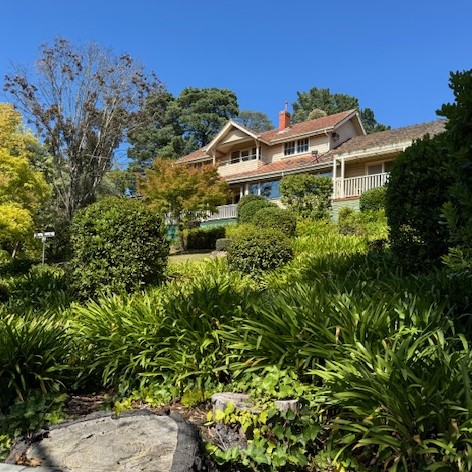
Clare Shearman, retiring director, writes
|
On a personal note, I would like to thank the Missionaries of the Sacred Heart for the opportunity to serve as Director and Relations Manager since 2020. Both roles have given me a chance to observe the work of the Holy Spirit firsthand. I am a Heart of Life person, someone who has been led into a closer relationship with the Sacred Heart of Jesus by the work of this place, and I shall forever be thankful for that. Alison McKenzie, our new director, arrived in Melbourne this week and shares a thought about her arrival below. I hand over to Alison and the wonderful Heart of Life team with deep gratitude and look forward to watching and hopefully participating in Heart of Life’s next chapter. And |
|
|
A Significant MSC Gathering, Vietnam
A Significant MSC Gathering, Vietnam

Khoi Nguyen msc
This discernment gathering is one of the recommendations of the MSC Australian Chapter April 2023, that the MSC Vietnam Community is recommended to have such a gathering to discern their future together with the support and consideration for future decisions of the new Provincial Leadership Team.

Since February this year, Hien Vu, a Melbourne diocesan priest, and I have been meeting and facilitating a process of communication, preliminary communal discernment at the local level and in small groups, and our discernment as facilitators, and we sense five major areas emerging at this stage:
- Our potentials
- Community life
- Initial formation
- Mission
- Vocations
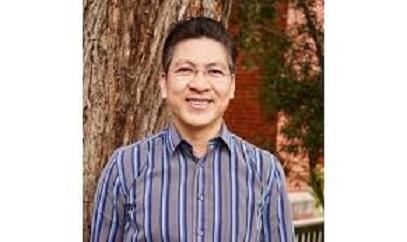
We have agreed that these will be our ‘launching pads’ into further discernment at this face-to-face gathering, which will be in Vietnamese during the process to accommodate the whole community and respect the local culture. However, these are not our ‘fixed agenda.’ If the community had a sense that differs from these, the discerning community would be open to it. We promise to go where the Spirit leads.
Therefore, we need lots of prayer and support from the rest of the Province in this process, the process of synodality Pope Francis has called us to embody as church community. We pray that we will be united and challenged to be authentic as a missionary community in Vietnam and beyond.
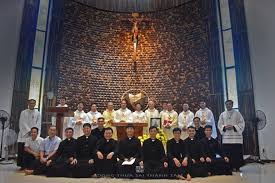
Around the Provinces
Around the Provinces
Father General meets the Archbishop of Jakarta

The Superior General, Mario Absalon Alvarado, MSC is in Indonesia for his June-July 2024 Visit. One of the purposes of his visit is to have a meeting with the Archbishop of Jakarta, H.E. Ignatius Cardinal Suharyo Hardjoatmojo.
The meeting was eventually held on June 3, 2024 at the guesthouse of the Archdiocese of Jakarta. The General was accompanied by the Provincial Superior of MSC Indonesia, Samuel Maranresy, MSC and his council.
Pacific Regional Seminary of Saint Peter Chanel
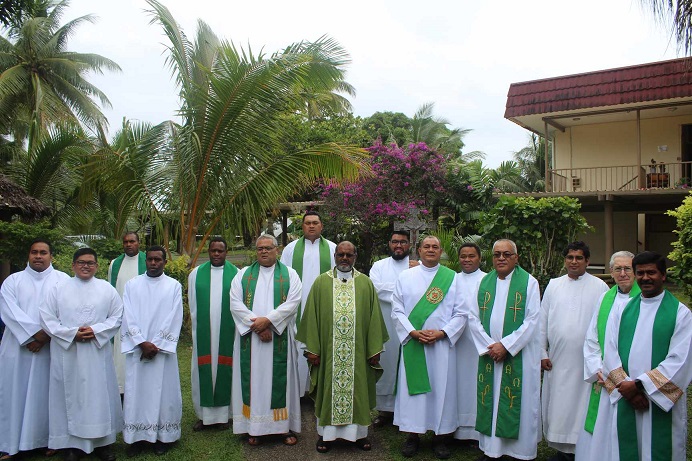
We are thrilled to extend our heartfelt thanks to Fr Simon Mani for his exceptional leadership as the previous Rector at PRS. His guidance and support have been invaluable to all of us at the Pacific Regional Seminary, and he will be dearly missed as he takes on his new role as Bishop-elect of Tarawa & Nauru.
This morning, we had the honor of having Bishop-elect Fr Simon Mani preside over a memorable Mass. It was a poignant moment for us all to witness his transition from our beloved Rector to his new calling.

Additionally, during the Mass, we celebrated the change of student leadership. We are delighted to introduce our new Student President, Fetaraisa Popese, from the Diocese of Samoa-Pagopago. Joining him in leading our community are Vice President Tavite Uluilakeba from the Congregation of the Sacred Hearts Suva, Fiji, Soane Malau from the Archdiocese of Noumea, and Morino Lambamu as the Secretary from the Diocese of Port Vila.
Please join us in congratulating Fr Simon Mani Msc on his new appointment and offering our best wishes to our new student leaders. Let us continue to support each other as we embark on this new chapter together.
Bishop- elect Fr SImon will leave for Tarawa on Monday 15th July to continue preparation for this Episcopal Ordination on 28th July in Tarawa.
Meeting of MSC Provincial Superiors and Formators (Central America)
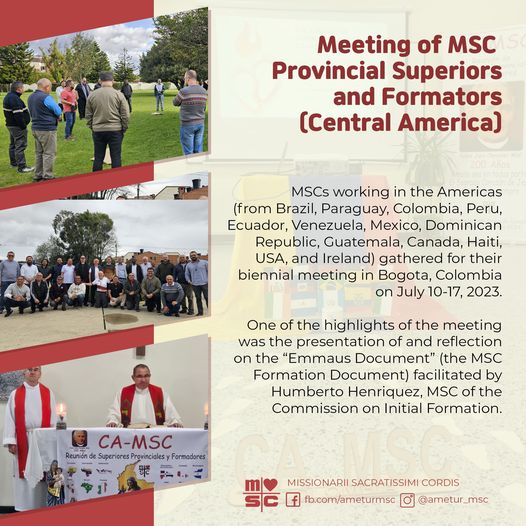
MSCs working in the Americas(from Brazil, Paraguay, Colombia, Peru, Ecuador, Venezuela, Mexico, Dominican Republic, Guatemala, Canada, Haiti, USA, and Ireland) gathered for their biennial meeting in Bogota, Colombia on July 10-17, 2023.
One of the highlights of the meeting was the presentation of and reflection on the “Emmaus Document” (the MSC Formation Document) facilitated by Humberto Henriquez, MSC of the Commission on Initial Formation.
Twisters
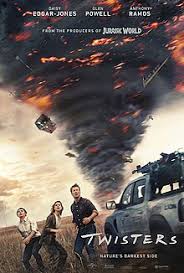
TWISTERS
US, 2024, 117 minutes, Colour.
Daisy Edgar-Jones, Glen Powell, Anthony Ramos, Brandon Perea, Maura Tierney, Harry Haddon-Paton, Sasha Lane, Darrell McCormack, David: Corenswet.
Directed by Isaac Lee Chung.
By a happy twist of fate, Twisters is an entertaining crowd-pleaser. Anyone who buys a ticket, keen to see tornadoes in action as well as the human efforts to chase and combat them, will find a multitude of twisters here. The special effects of the tornadoes themselves, the visuals of their destructive force, the ruins and aftermath, are quite spectacular. And the editing keeps the action running at a very brisk pace, often edge-of-the-seat adrenaline pumping.
1996, the original Twister was a holiday entertainment, much the expected theme, two experts, despite divorce proceedings, working together to chase the tornadoes. The director of that film, Jan de Bont, had not heard that there was to be this kind of sequel, making a comment that a sequel could only succeed if the tornadoes were bigger. The filmmakers this time have absolutely taken notice of that observation, not only are they bigger, there are many more of them.
But, the screenplay here places quite a lot of emphasis on the science – whether the audience understands the details of it or not. In fact, the film opens with a young enthusiast, Kate, Daisy Edgar-Jones, leading a team that hopes to release chemicals into the eye of the twister to dissipate its force. There are some scientific explanations. But, the experiment is a tragic failure, the deaths of several of the participants.
Then we go five years later. One of Kate’s former colleagues, Javi (Anthony Ramos) enlists her help with his experiments, placing tracking machines around the tornado in order to get a three-dimensional reading. Again, scientific explanations. By contrast, there is Tyler (a grinning Glen Powell more gung ho at first and he was in Top Gun Maverick), a so-called tornado wrangler, with his own team of scientists (who, In All clothes, do not look like it), and filming his exploits, taking tornado tourists out to witness the phenomena, and a British journalist joining. in
Obviously, there is going to be rivalry. And there is. However, there are some jaw-dropping sequences of the tornadoes and their force, extraordinary destruction and ruin with the challenge to Kate and Tyler and Javi as to whether they pursue their research or go to help people in distress. (And in the background there are themes of corporate exploitation of those whose homes of livelihoods have been destroyed.)
In fact, Kate retires from the chasing and goes home, her mother urging her to do more research, Tyler tracking her down and collaborating – after they go to rodeo, also a tornado victim. Already magazine articles are being headed “whirlwind romance”! At first it is a battle of the sexes, but very strong on equality between men and women, and then scientific collaboration. Actually, there are some sequences during the final credits when audiences are stampeding for the exits, which actually show further plot developments.
Twisters sets out to be an action-disaster holiday entertainment. It succeeds well.
- The reality of tornadoes, twisters in the United States, the Southern States? The weather phenomena? The impact on towns and populations, on the countryside?
- The 1996 film and its popularity? Continued films on twisters? This sequel, many more tornadoes, much more devastation, much more scientific speculation, tornado wrangling, tornado tourism, experiments to understand tornadoes, physics and chemistry?
- The film in the disaster movie tradition? Action, adventure, characters, crises?
- The opening, Kate and her team, the scientific background, their personalities and interactions, the dangers of the tornado, the attempt to release the chemicals, winds, vehicles overturned, characters blown away? Kate and her relationship with Jeb, the driver, saving her under the bridge, his being blown away?
- Five years later, Kate New York, her work, observation of storms? Javi and his visit, his story, the Army, experiments, technology to observe twisters, three dimensions? His sympathy, his participation in the early experiment and surviving? Asking Kate to come for a week?
- Kate, meeting Javi’s team, professional, academic backgrounds, Scott and his hostility to her, his criticisms of her? The connection with developers and the later consequences? The chasing of the tornadoes, Kate and her expertise, the encounter with Tyler, rivalries, her missing out and Javi’s response?
- Tyler, tornado wrangler, big grin, cowboy, his team, vehicles, theyir not looking scientific, their passengers for tourism, the risks of the dares, the British journalist, observation, anxious (bounced around, later sick, his seatbelt)? The audience later realising that they were scientific and skilled despite appearances?
- The tornado sequences, the dangers, the twisting, the air, the wind, blasting vehicles, the placing of the machines for the three-dimensional picture?
- Kate, her background in the state, Tyler underestimating her, the later going to the rodeo? The awareness of the towns in danger, the decisions to go to help, the visuals of the twister attacking the towns, the people, the aftermath? The businessman and his exploiting the survivors, allegedly with financial help? Kate and a sense of disillusionment with Javi and his team?
- The destruction of the rodeo, the audience enjoying it, Tyler and his saying he used to ride the bulls, the wind, trying to rescue people, the movie theatre, survival, Tyler holding onto his associate? Kate going out, the experiment with the chemicals? Their rescuing her?
- Kate, distance from her mother, going home, settling in, her equipment, the model village, her looking at her notes? Tyler tracking her down, interest, explanations? Her mother inviting Tyler to stay? Their working together, working out the chemicals, rain precipitation, lessening the impact of the twister?
- The final opportunity, the tornadoes, going out, the battering, explosions, the dangers?
- The final success, the release of the chemicals, lessening the impact of the twister?
- Kate to get back to New York, Tyler the airport and his truck and its ability to dig into the ground and stay, the credits sequences and the photos, the clips, the development of the plot, working together, success, romance…?
Something in the Water

SOMETHING IN THE WATER
US/UK/France, 2024, 86 minutes, Colour.
Hiftu Quasem, Natalie Mitson, Nicole Rieko[Setsuko, Lauren Lyle, Ellouise Shakespeare-Hart.
Directed by Hailey Easton Street.
Yes, the sharks menacing story once again. However, this is a small film, a small cast, some personal drama, and menace in the open sea, including sharks. It is very low-key in comparison to most of the shark films.
The first 20 minutes introduced to central characters, Meg and Kayla who intends to propose to Meg. They are accosted on their way home, homophobic slurs, and Meg is bashed as Kayla insults the group.
A year later, their friend, Lizzie, invites her friends, including Meg and Kayla to come to a Caribbean island to celebrate her wedding. Meg and Kayla have not met since the bashing and Meg is very reserved, fairly hostile.
There is a celebration of a meal in preparation for the wedding and the group goes out in a boat to an island, three of the women leaving Meg and Kayla on the beach to reconcile their differences. When they all team up again, one of the women in the water suffers and attack, a gashing wound to her leg, significant bleeding. They decide to return to the mainland in their small boat which they have previously criticised as inadequate. And it has only one lifejacket.
The rest of the film, it is diminishing numbers of the friends, the wounded girl dies and they let her go out to sea. Lizzie, the future bride, reveals that she cannot swim so she is given the lifejacket. Kayla then decides to swim for help. Another of the women is taken by the shark. A boat passes but does not notice the two women clinging to the lifejacket.
Meg sleeps during the night and Lizzie then disappears sacrificing herself for Meg. Meg finds a rock outcrop, is circled by a shark, the tide rises, Kayla arrives just in time to rescue Meg.
This is very much a women’s film, writer-director, cast, women’s issues and interests.
Bikeriders, The
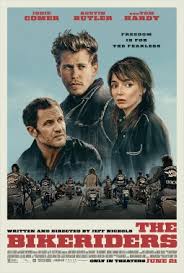
THE BIKERIDERS
US, 2023, 116 minutes, Colour.
Jodie Comer, Austin Butler, Tom Hardy, Michael Shannon, Mike Faist, Boyd Holbrook, Norman Reedus, Damon Herriman, Beau Knapp, Emory Cohen, Karl Glusman, Toby Wallace.
Directed by Jeff Nichols.
1965 to 1973, a photojournalist, Danny Lyon, followed a bike club in America’s midwest, interviews, photographs, chronicling characters and events and ultimately publishing a book. This film is based on his book and photos, some of which appear during the final credits.
1969 was the year of Easy Rider, popular at the box office, awards, riding motorbikes.
For audiences who enjoy the adrenaline pumping of motorbike riding, this can be a vroom, VROOM experience. For those interested in masculinity in American Midwest society during the period, this is a macho, MACHO experience. Which raises many questions. (And, early in the film, the club leader, Johnny, refers to the 1955 Marlon Brando motorcycle movie, The Wild One.)
Danny Lyon’s observations and photos were of a club culture in the late 1960s, clubs for men who like riding bikes, jackets and jeans, non-stop smoking, drinking in their club-pub, out riding like a phalanx on the streets and open highways, generally working class men, critical of college educated men, rarely at home, and a few groupie women tagging along.
While this is a picture of the men in the club, the perspective of director, Jeff Nichols, is often that of a central female in this story. Her name is Kathy. She is played by British Jodie Comer, a very strong and commanding performance, being interviewed by Lyon in the mid-60s and then after the events in 1973. Most of the action is shown in flashback, her story of what it happened.
At first, Kathy is sheltered and rather naive, meeting a friend in the club’s pub, harassed, wanting to leave until she glimpses Benny a young sandy-haired moustachioed tall biker whom we have seen previously in an opening sequence, sitting at a bar, proud of his club jacket, announcing his club The Vandals, and severely bashed by two large rednecks from another gang. Kathy is smitten and within weeks is married to Benny.
The film is a showpiece for Austin Butler (after Elvis and Dune 2) but while he is visually striking, and a presence, his character seems one-dimensional (perhaps two-dimensional) and he does not make the impact on the audience that he does for Kathy and for the leader of the club, Johnny, who wants Benny to take over (and we are thinking, as if!). And, Tom Hardy, strong actor as he is, is not always persuasive as Johnny, the president of the club, not always quick on the uptake.
The club sometimes seems a local bikie equivalent of a cult, a leader exercising power (violently), his lieutenants loyal, the rest of the club eager to submit, and members from other bikie groups wanting to join The Vandals.
At this stage of the 1960s, these groups were clubs rather than gangs. There was some personal drugtaking but not dealing. There were tough macho attitudes and behaviour towards women (with Kathy targeted a number of times and becoming more desperate until she could not take it any longer) as Well Is towards men, rivals.
The Bikeriders shows the transition from club to gang, drug dealing, killings, the rise of the lawless leaders – and, going back to the 1960s, we can see that the macho attitude leads to masculine supremacy, to white supremacy, to the hate groups of the 21st-century.
While Jodie Comer and Tom Hardy are British, there are substantial roles for Australians, Damon Herriman as Johnny’s lieutenant and Toby Wallace as the upstart future gang leader. Michael Shannon has appeared in Jeff Nichols films (Take Shelter, Midnight Special) and has some fine cameo speeches here lamenting his not being accepted for Vietnam, and his continued inferiority criticism of Pinkos (those men who are college educated).
Not exactly an enjoyable film but a challenge to thinking about clubs, gangs, supremacists, and the domination of males in this kind of society.
- The title and the focus, the bike clubs, the later development into gangs, male supremacy…?
- The origins of the film, Danny Lyon following the clubs, 1965-1973, the era of Easy Rider? The Vietnam War? The interviews, the two interviews with Kathy, her memories, the range of photos? Seen during the credits?
- The initial impact of the bar scene, Benny, drinking, the two rednecks, challenging his jacket, his refusal, the bashing, his injuries? The later return to the hotel, the fear of the owner, giving up the names, and Johnny burning down the hotel?
- Danny Lyon and his work, personality, with Kathy, observing, discussing, photos, the book? In the final credits? The interviews with Kathy, her age, manner, way of speaking, idiom, the story of going to the club, her friend, the reactions, touching her, leaving, the glimpse of Benny, the attraction? The explanation of Benny, with him, married within five weeks? Her perspective on the club, on the men, on the riders? Verbalising them? Her memories visualised?
- The nature of the clubs, the men, the few women tagging along, their enjoying their own company, macho, talk, tough, drinking, continued smoking, the leader, Johnny, his control, the loyal lieutenants, the loyalty to the group, devotion to their bikes, bidding in groups along the streets and highways?
- Benny, his character, one-dimensional, his place in again, loyalty to Johnny, follower, the relationship with Kathy, at home watching television, absent with the group, present at the picnics and the club gatherings? The later challenge to Johnny, his rushing in, his being bashed, his foot injury, hospital? Kathy and her reaction, growing more distant and disapproving, Johnny take him aside, wanting him to be his successor as leader? Benny and the final confrontations, Johnny’s death, his disappearance? 1973, returning to Kathy, then moving to Florida, seeing him at his job?
- Johnny, character, leader, the later surprise discovery that he had wife and children, his leadership, Bruce and the other lieutenants, loyal and agreeing with him, decisions, slow on the uptake at times, power, violence, the knife fight, the members from the other group his decision, the young upstarts, wanting the leader to come alone and refusing him because of his disloyalty to the group, the later attack, the upstart and his death?
- Similarities of the clubs to cults, the leader, loyalties, power and responsibilities? The sketches of the other members of the group, Bruce and his loyalty, Cal and his military background…? The groups together, the righting, talk, the bars, the episode of the red dress and the attack on Kathy, the intervention?
- The young upstart, his manner in the town, with his parents, his group, wanting to join, Johnny demanding the test, his failing, ready to abandon his group, the later return, violence, his agreement knife fight, shooting Johnny?
- The transition from bike clubs to buy gangs, issues of masculinity, attitudes towards women, the changes in the latter 20th century, feminism? The gangs, drug dealing, violence? And the transition to mail supremacists and the groups in gangs of the 21st-century?
Year of Fury, The/ L'Ano de la Furia

THE YEAR OF FURY/ L’ANO DE LA FURIA
Spain/Uruguay, 2020, 99 minutes, Colour.
Alberto Ammann, Joaquin Furriel, Daniel Grao, Martina Gusman, Sara Salamo, Paula Cancio, Maribel Verdu.
Directed by Rafa Russo.
The 1960s to the 1980s were decades, especially in Latin America, of social upheaval, political unrest, military coups, dictatorships. Audiences are more familiar with those in Chile with the death of President Allende in 1973 and the subsequent rule of General Pinochet, as well as the history of Argentina, the rule of the Generals and the Falklands war.
This film is about Uruguay, a smaller country, not so well-known. And it takes place in 1972, an atmosphere of military rule, then a move towards a coup d’état and a dictatorship. It has been written and directed by Rafa Russo (The Movieteller).
The film shows the steely intent of the authorities, high righteous ideology, with some religious background, and, with one of the central characters, a man who tortures, trained in the School of America techniques, playing music while he tortures, but his own character tortured, militarily ambitious, agreeing with the ideology, distant from his wife, and then taking up with a prostitute who, in fact, has been chosen by the authorities for him. The key aspect of the drama is his relationship with her, the authorities deciding his relationship is too much and shooting her – but her survival, her pregnancy, his shielding her, exposure, her death – and the fate of the new born baby.
The rebels are also shown, initially in the torture chamber and the news of the deaths. And the focus of the film is on two writers of television satire, one of them with a harsh past, a celebrated novelist, but arrested, bound and executioners firing around him but not at him to intimidate him. The other writer is very earnest, introduced into the group of rebels, but also very friendly with and caring for the pregnant prostitute.
There are no winners in this situation, some rebels fleeing to Argentina, others arrested, pursued and killed, and the central writer forced to stand up for his conscience.
Audience knowledge of Uruguay and politics, the 1970s, dictatorships?
South American of the period, Chile and President Allende, the 1973 uprisings and dictatorships? The experiences in Argentina? As background for this story?
The visuals of Uruguay, the city, the views, homes, the streets, the television studios, the meetings of rebels, the military, the prisons, the torture chambers, hotels and rendezvous? The musical score?
Elaboration of the political situation, the role of the military, the role of the political leaders, the move towards pressure and repression, arrests, torture, rebels and their being spied on, atmosphere of fear?
The focus on Diego and Leonardo, their writing satire, the performances, the studio response, the studio chiefs, the political implications? The success? Under suspicion? The pressure on the studio heads, rewriting the satires? The reaction of the actors, Leonardo and his anger? Diego and his disillusionment?
Diego, the focal character, the situation through his eyes, a good man, his friendships, with Jenny and Emilia, his friendship with Susana, in all her troubles, supporting her? The friendship with Leonardo, his background, author, stopped in the street for autograph, his moving on, memories of his arrest, the threats, blindfolded and the shots, the warning and his subsequent life, drinking, women, the past relationship with Emilia? The writing, anonymous, having to change the screenplay? Diego, anger, the falling out between them? The later reuniting, Leonardo and his explanations?
Emilia, the family, the relationships with the men? Jenny, the relationship with Sergio, in the house, his being tortured, the news of his death, hiding his things, the search of the house? Emilia and Leonardo? Jenny and her involving Diego, the meeting with the groups, the information about Rojas, the consequences?
The atmosphere of the torture, Rojas and his putting on the music, Sergio and the torture, the later news of the deaths of the prisoners?Trained by the Americans in Panama, School of the Americas, torture skills, yet playing the music? The tense relationship with his wife? The meeting with Susana, seeing her at home, preparation to go on the streets, the blonde wig, with Rojas, the military picking her?
The relationship with Rojas and Susana, her being pregnant, his visits, his violence, yet his tenderness towards her, the secret police their watching him, the threats, shooting Susana, her recovery, his getting the apartment for her? Her secrecy, but her telling Diego, his telling the contacts, the following Rojas, the secret police following them, and shooting the pursuers dead?
The birth of the baby, Diego helping, Rojas taking the baby and giving it to his wife?
The buildup to a coup, the subsequent history Uruguay, refugees fleeing to Argentina, Leonardo and his future, Diego and his place in society?
A grim reminder of political situations 50 years later?
In A Violent Nature
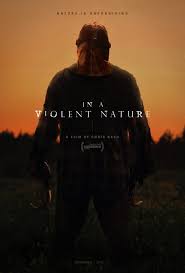
IN A VIOLENT NATURE
Canada, 2024, 94 minutes, Colour.
RY Barrett, Andrea Pavlovic, Cameron Love, Reece Presley, Liam Leone, Lauren-Marie Taylor.
Directed by Chris Nash.
This is a Shudder production. Shudder is a subscription on demand network for horror, thriller and supernatural movies. It is for a niche market of viewers (some referring to the genre community) who enjoy these genres – and, especially, as a move towards more extreme content and style, an emphasis on slasher movies, horror and gore.
Which is the background for In a Violent Nature. On the one hand, the core of the narrative is almost archetypal, kind of narrative made very popular by the Friday the 13th franchise. A group of people are in the woods, a serious masked killer stalks them, eliminating them one by one – in grim and gruesome style.
This is what happens here. At the campfire there is a story told about a massacre which took place 60 years earlier in the forests, the death of Johnny and his burial, and a necklace from his mother hanging from the iron shafts at the mine. If the necklace is removed, he will rise from the dead. The group of 30-somethings are sitting around a campfire, discussing the story, one taking the necklace, Johnny rising from the dead, a sombre corpse figure, the campers killed in gruesome manner, extreme close-ups of bashings, shootings, decapitations… Which is what the enthusers for slasher films want.
And, there is a survivor, traumatised, getting a lift to the hospital, the audience knowing that there can be sequels.
As said, these films are made for a niche audience. The general public would not want to see this kind of film, would find the visuals too confronting, the narrative upsetting, and many of the details, relished by the writer-director, Chris Nash, a special effects expert. General audiences would want to shut their eyes and turn away.
To that extent, In a is to Nature is what Shudder audiences expect.
But, they great deal of the running time is spent in static gaze at the mine, at the woods, long sequences simply following Johnny with the woods. He eventually finds a mask to wear. This gives the audience plenty of time to ponder who he is, why he is what he is, the fate of the victims. These long sequences are something of a puzzle as to why the director has decided to include so many of them. And, after the last grim killing, and the escape of the woman, almost 10 minutes are devoted to the two women driving the truck, the driver talking and chatting about a relative who survived the attack in the woods, the victim quiet and traumatised. And then the film ends.
On checking with bloggers on the Internet movie database, there is quite divided opinion. Some comments admire the style of the director and his different, slow approach, while many of the regular viewers declare that it is all too slow, too boring…
In a Violent Nature received some theatrical release enabling non-Shudder viewers an opportunity to watch one of their productions.



